
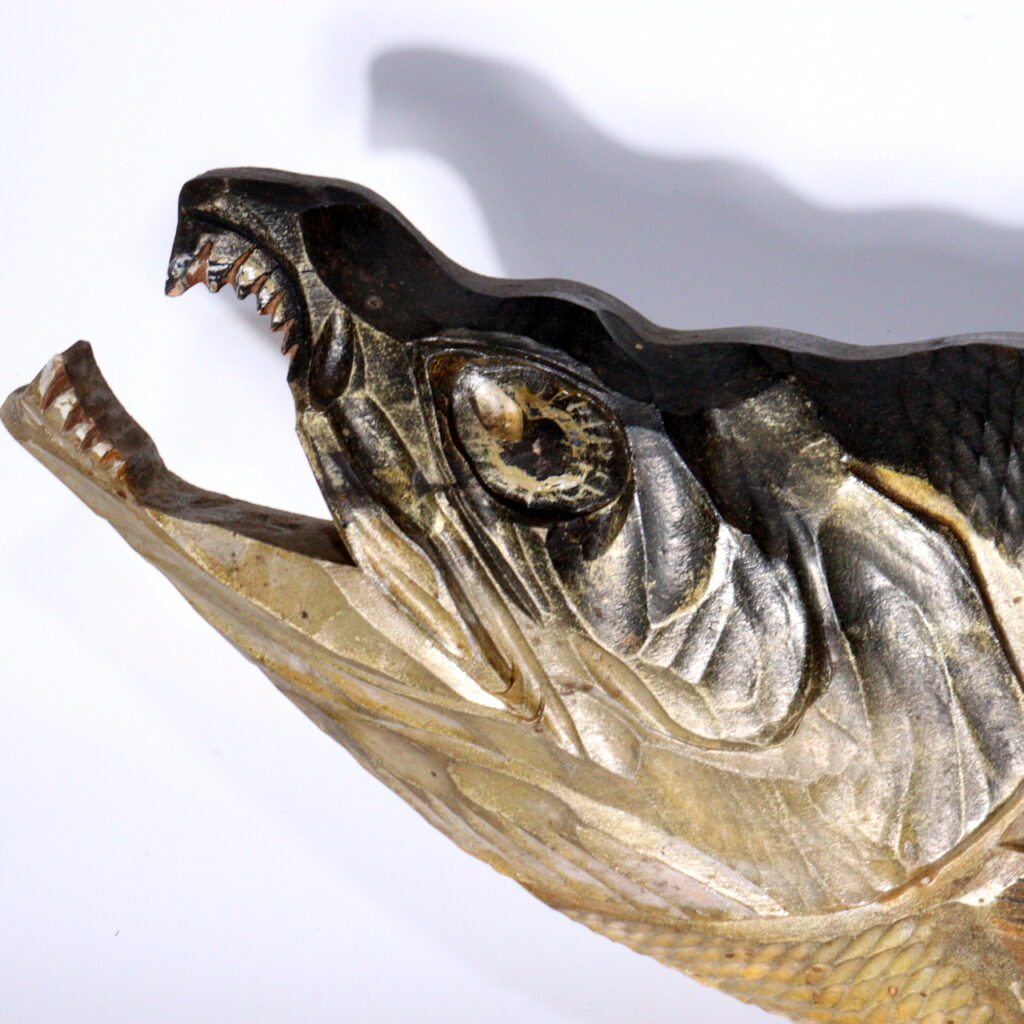


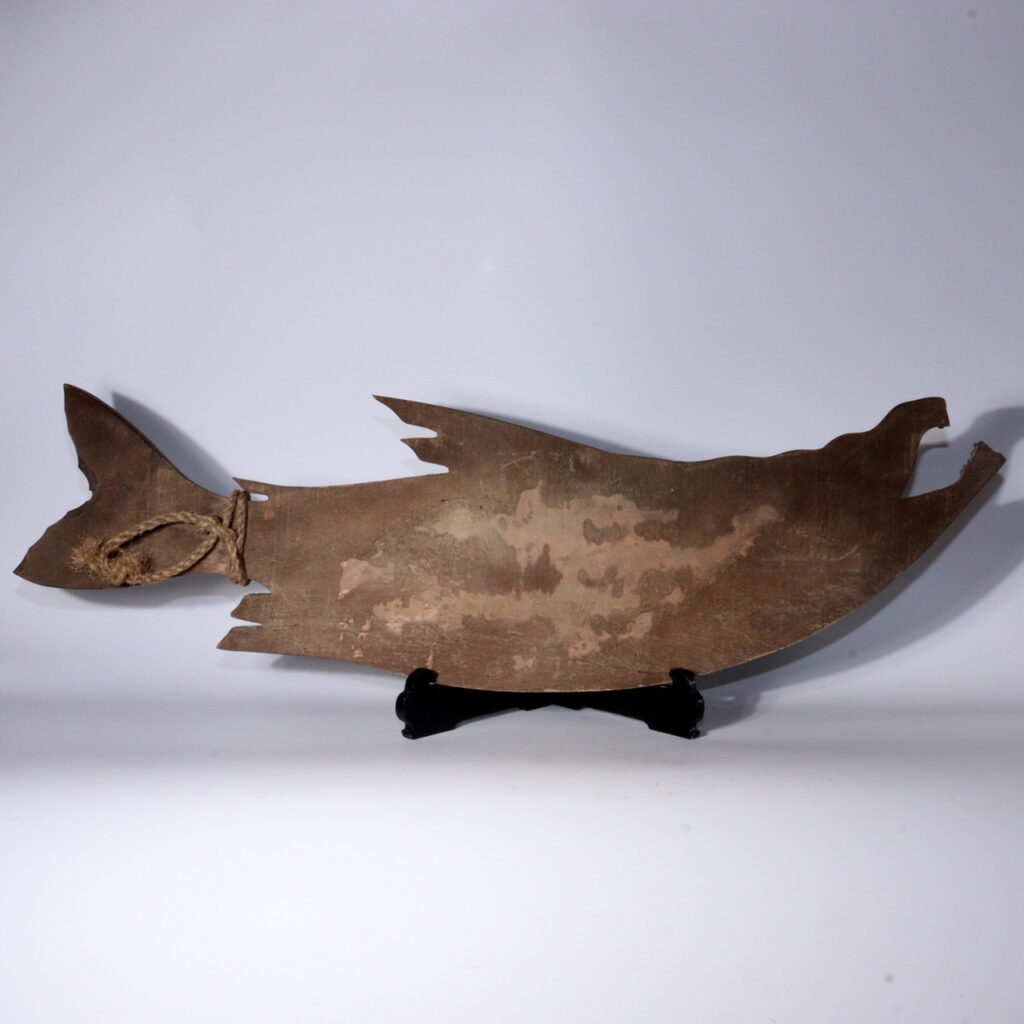
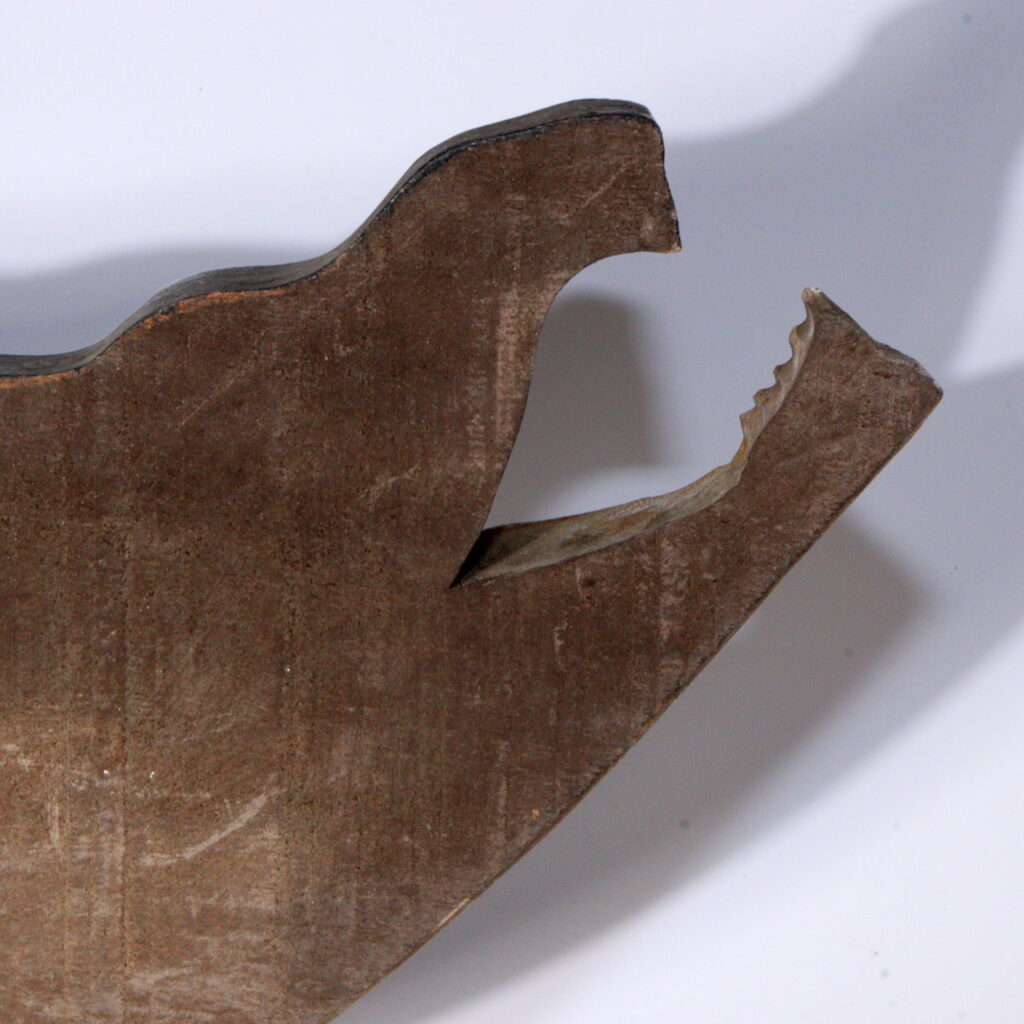
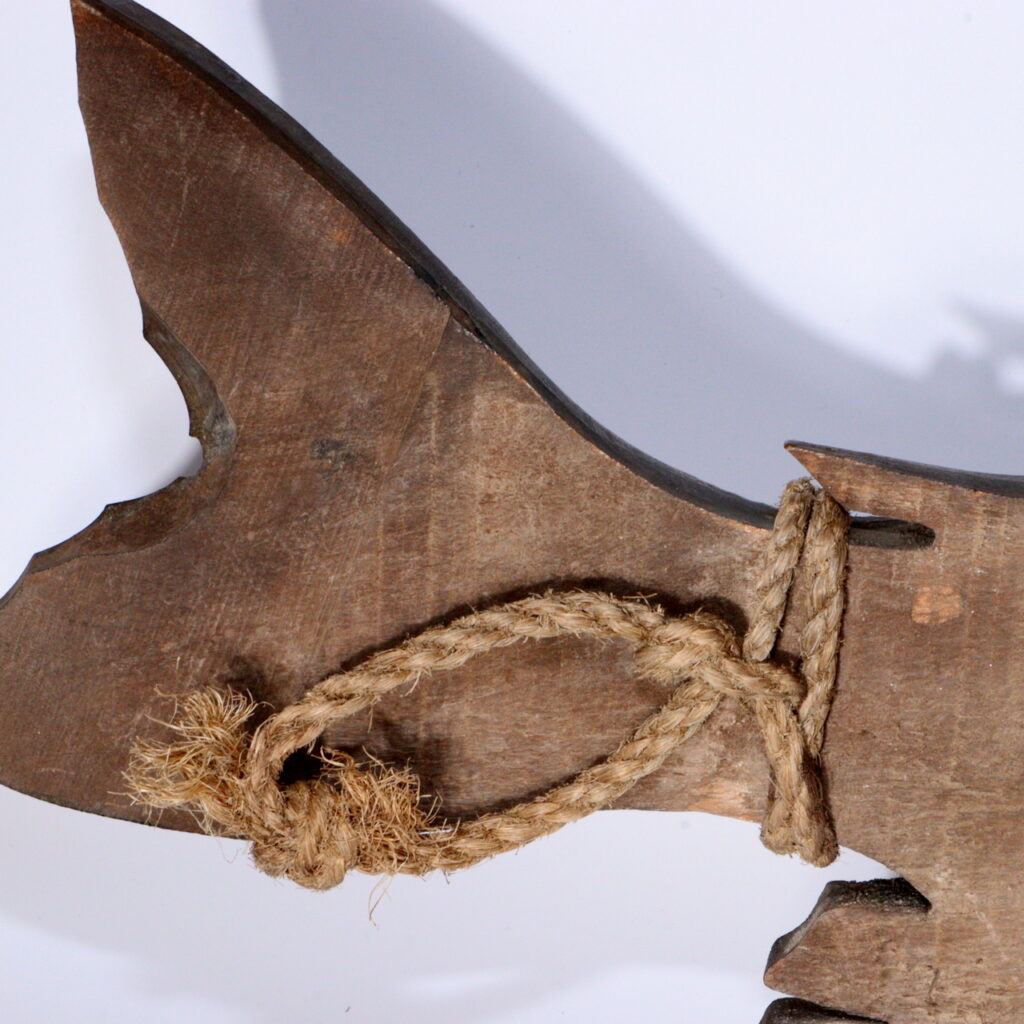
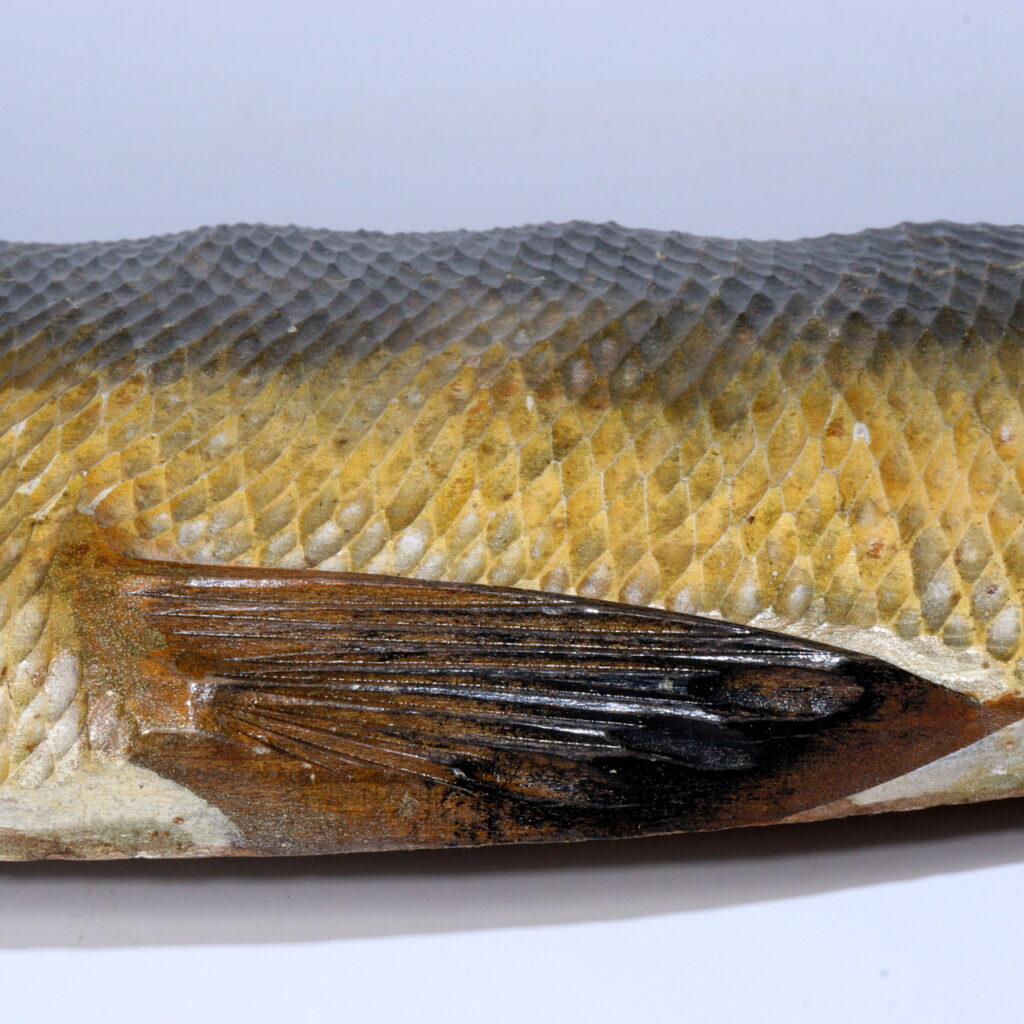
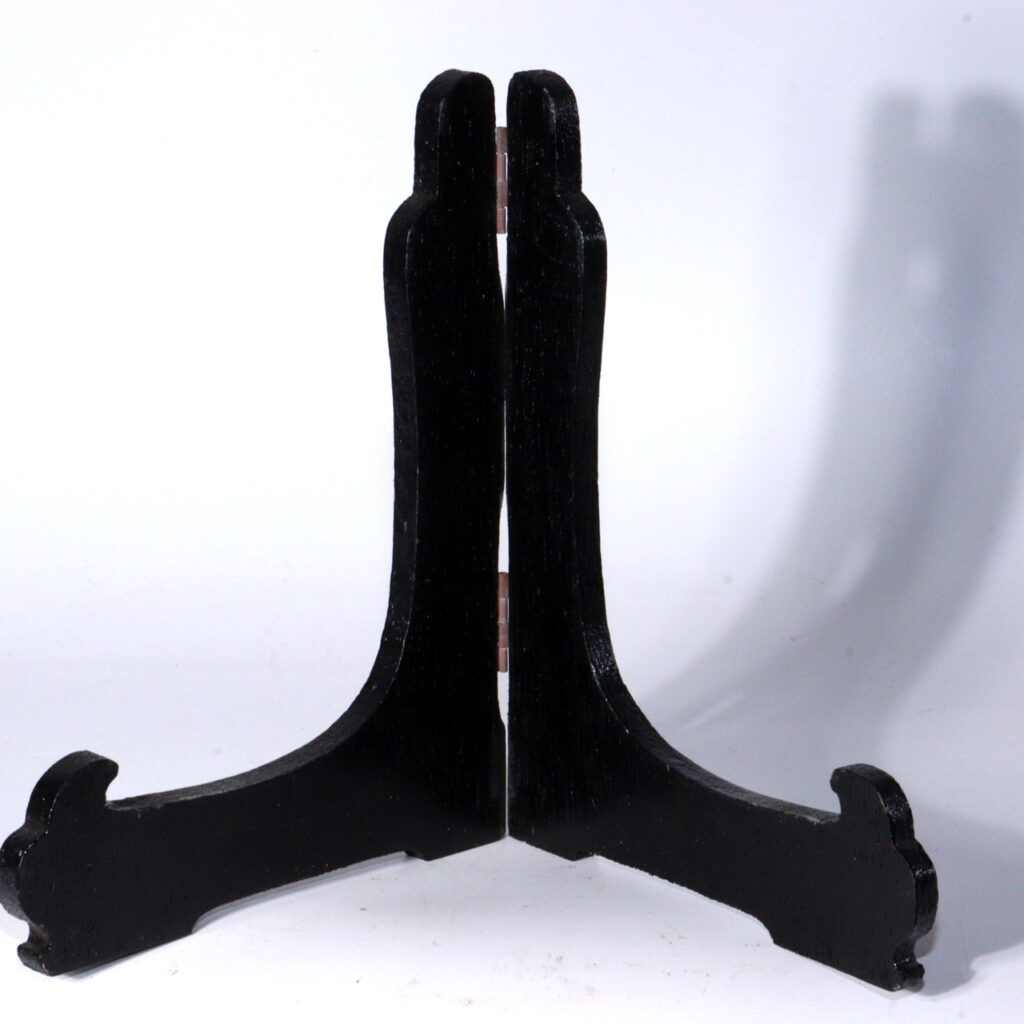
Few objects evoke the essence of traditional Japanese hospitality like a handcrafted wooden signboard. This vintage wooden carving of a salmon is not merely a decorative item—it is a historical echo of bustling izakayas, seasonal feasts, and the craftsmanship that once adorned everyday life.
The Story Behind the Carving: Salmon as a Symbol of Welcome
During the Edo to Meiji periods, it was common for Japanese izakayas and teahouses to use hand-carved wooden figures as signboards (kanban). Unlike written signage, these carvings served as immediate visual cues—even to those who could not read—that fresh seafood was in stock and the establishment was open for business.
In particular, a salmon carving signaled that the shop had acquired exceptional catches that day—perhaps freshly caught sake (salmon) or maguro (tuna)—inviting locals and travelers alike to gather for food and drink.
These sculptural signboards represent more than advertisement; they reflect a time when daily commerce was infused with folk artistry and visual storytelling. While carp-shaped Jizai-kagi (adjustable hearth hooks) are more commonly encountered, salmon-form carvings like this are rare and rich in narrative.
Highlights of This Unique Folk Art Piece
This vintage wooden salmon sculpture is a standout in both craftsmanship and cultural meaning:
- Material: Carved from natural wood with a warm patina
- Style: Traditional Japanese wood carving, likely mid-to-late Meiji period
- Function: Once used as a signboard at the entrance of a tavern or fish-serving establishment
- Symbolism: Salmon represents prosperity, good harvests, and seasonal bounty in Japanese culture
- Condition: Aged naturally with signs of authentic use—ideal for wabi-sabi enthusiasts
The details—finely chiseled scales, expressive curvature, and smooth aging—attest to the skill of the artisan and the piece’s long-standing place in Japanese communal life.
Why It Appeals to Global Collectors
For collectors of Japanese antiques, this sculpture combines two powerful themes: folk art and functional history. In the West, wooden signage and trade-related artifacts are highly valued, especially those with figurative shapes or cultural symbolism.
This item resonates with:
- Enthusiasts of Japanese folk craft (mingei)
- Collectors of Meiji-era antiques
- Lovers of fish symbolism in Japanese design
- Interior designers seeking organic, narrative-rich pieces
Whether displayed in a kitchen, restaurant, or gallery wall, this wooden salmon offers texture, story, and soul.
Own a Piece of Japan’s Culinary Heritage
More than an object, this vintage wooden salmon carving carries with it a legacy of craftsmanship, daily ritual, and the quiet allure of Japanese wabi-sabi aesthetics. It reminds us that even functional items—when thoughtfully made—can become timeless works of art.
🌀 If this piece is already sold, please visit our full collection of Japanese folk art and wooden antiques here:
🔗 https://koedo-sun-art.com